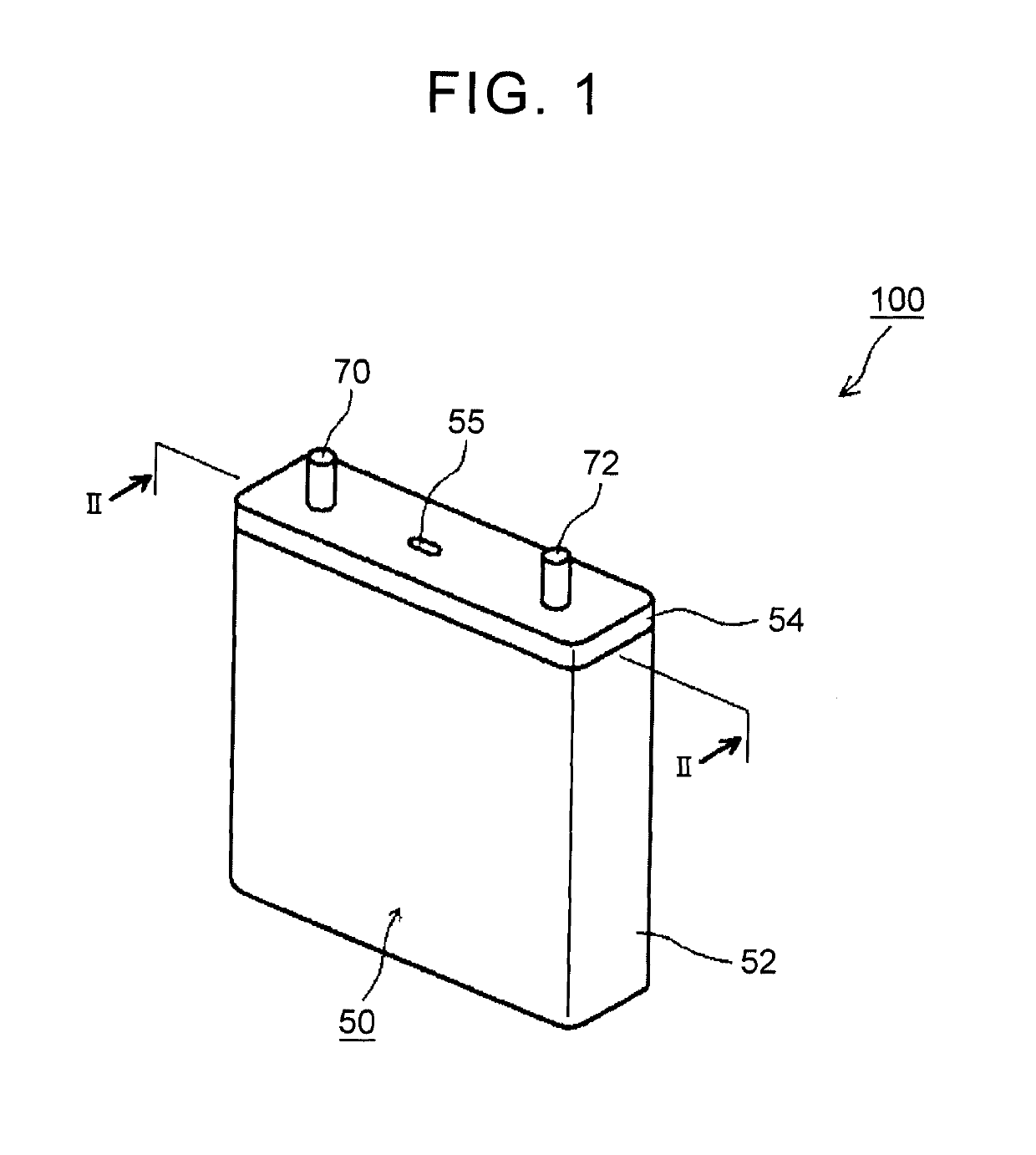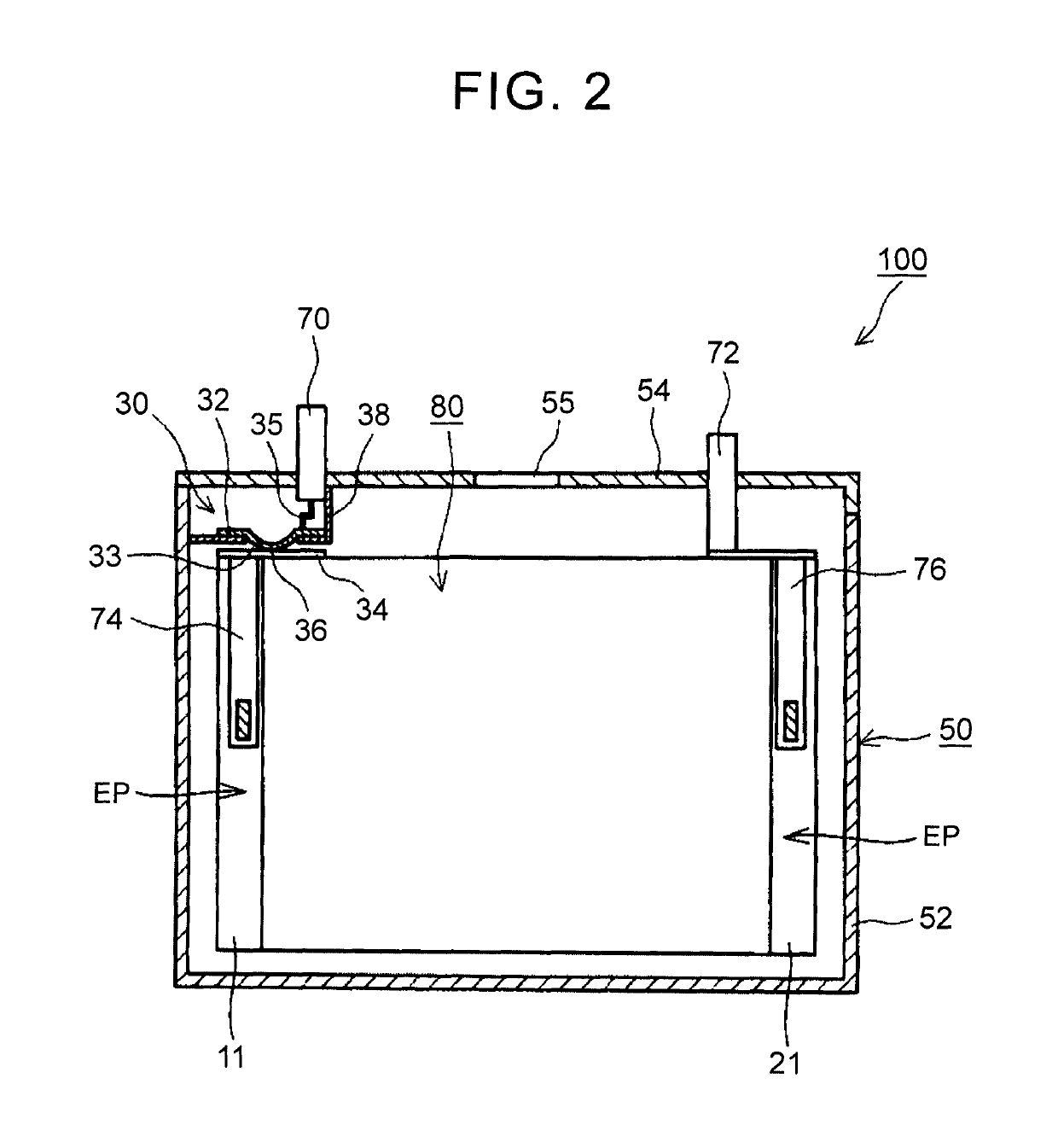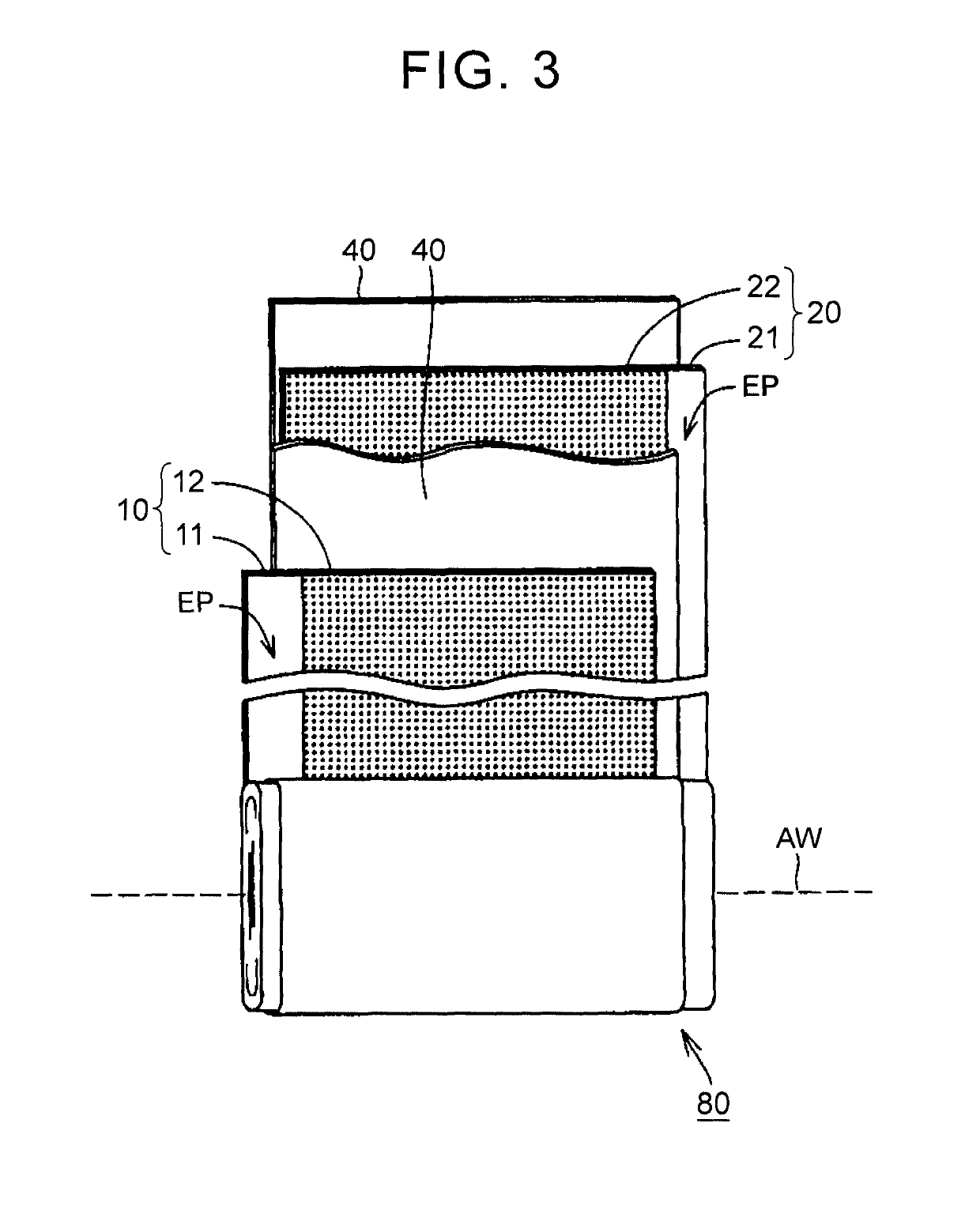Nonaqueous electrolyte secondary battery
a secondary battery and electrolyte technology, applied in secondary cells, battery service/maintenance, cell components, etc., can solve the problems of low conductivity inability to efficiently increase internal pressure, and low capacity per volume of lithium iron phosphate, etc., to achieve the effect of large amount of gas produced during overcharg
- Summary
- Abstract
- Description
- Claims
- Application Information
AI Technical Summary
Benefits of technology
Problems solved by technology
Method used
Image
Examples
experiment 1
on Positive Electrode Mixture Layer
[0102]In Experiment 1, the effects of the layer configuration of the positive electrode mixture layer, the mixing ratio of LFP, and the like on battery performance were examined. Specifically, the following batteries A1 to A9 and batteries B1 to B14 were prepared to evaluate the output in a low SOC, the amount of gas produced during overcharge, and charging-discharging cycle characteristics thereof. Here, the batteries A1 to A9 correspond to Examples, and the batteries B1 to B14 correspond to Comparative Examples.
[0103][Battery A1]
[0104]1. Preparation of Lithium Iron Phosphate
[0105]Powder of lithium phosphate monohydrate, powder of lithium ferrous dihydrate, and powder of ammonium dihydrogen phosphate were prepared. These powders were mixed with each other in the same molar amount to prepare a precursor of LFP. Further, a carbon source (glucose) was added to the precursor, was fired at 800° C. for 12 hours, and was crushed to obtain LFP powder. Her...
experiment 2
on LFP
[0163]In Experiment 2, the effects of the physical properties of lithium iron phosphate powder on battery performance were examined. Specifically, the following batteries A10 to A15 were prepared to evaluate the output in a low SOC, the amount of gas produced during overcharge, and charging-discharging cycle characteristics thereof using the same method as described above. Here, the batteries A10 to A13, and A15 correspond to Examples.
[0164]1. Preparation of Lithium Iron Phosphate
[0165]Iron powder, phosphoric acid, and lithium hydroxide were caused to react with each other in water, and oxalic acid was added thereto dropwise, followed by drying. As a result, a precursor of LFP was obtained. This precursor was added to a carbon source (glucose), was fired at 550° C. for 12 hours, and was crushed. As a result, LFP (a) was obtained.
[0166]LFP (b) was obtained using the same method as that of LFP (a), except that the firing temperature was changed to 600° C.
[0167]LFP (c) was obtain...
PUM
| Property | Measurement | Unit |
|---|---|---|
| pore size | aaaaa | aaaaa |
| BET specific surface area | aaaaa | aaaaa |
| BET specific surface area | aaaaa | aaaaa |
Abstract
Description
Claims
Application Information
 Login to View More
Login to View More - R&D
- Intellectual Property
- Life Sciences
- Materials
- Tech Scout
- Unparalleled Data Quality
- Higher Quality Content
- 60% Fewer Hallucinations
Browse by: Latest US Patents, China's latest patents, Technical Efficacy Thesaurus, Application Domain, Technology Topic, Popular Technical Reports.
© 2025 PatSnap. All rights reserved.Legal|Privacy policy|Modern Slavery Act Transparency Statement|Sitemap|About US| Contact US: help@patsnap.com



